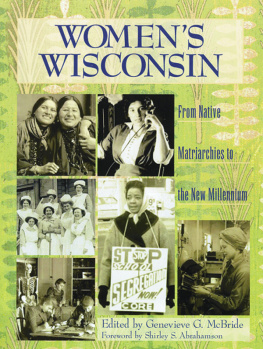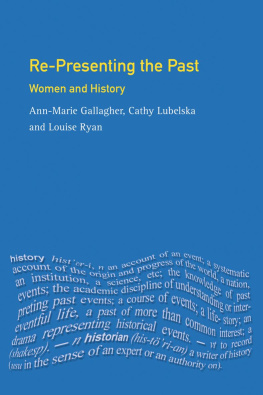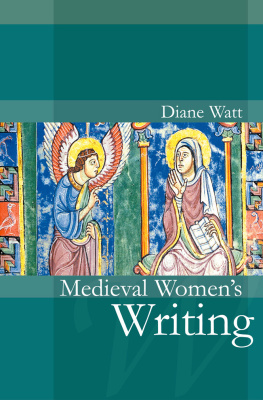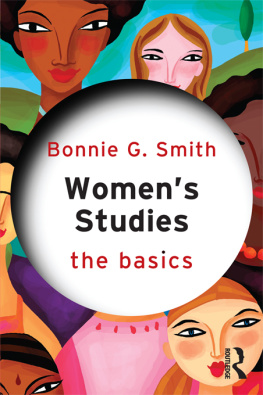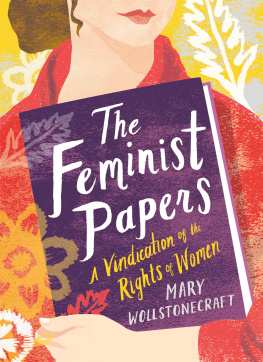Writing Womens History since the Renaissance
Writing Womens History
since the Renaissance
Mary Spongberg
Mary Spongberg 2002
All rights reserved. No. reproduction, copy or transmission of this publication may be made without written permission.
No paragraph of this publication may be reproduced, copied or transmitted save with written permission or in accordance with the provisions of the Copyright, Designs and Patents Act 1988, or under the terms of any licence permitting limited copying issued by the Copyright Licensing Agency, 90 Tottenham Court Road, London W1T 4LP.
Any person who does any unauthorised act in relation to this publication may be liable to criminal prosecution and civil claims for damages.
The author has asserted her right to be identified as the author of this work in accordance with the Copyright, Designs and Patents Act 1988.
First published 2002 by
PALGRAVE MACMILLAN
Houndmills, Basingstoke, Hampshire RG21 6XS and
175 Fifth Avenue, New York, N.Y. 10010
Companies and representatives throughout the world
PALGRAVE MACMILLAN is the global academic imprint of the Palgrave Macmillan division of St. Martins Press, LLC and of Palgrave Macmillan Ltd. Macmillan is a registered trademark in the United States, United Kingdom and other countries. Palgrave is a registered trademark in the European Union and other countries.
ISBN 0333726677 hardcover
ISBN 0333726685 paperback
This book is printed on paper suitable for recycling and made from fully managed and sustained forest sources.
A catalogue record for this book is available from the British Library.
A catalogue record for this book is available from the Library of Congress.
10 9 8 7 6 5 4 3 2 1
11 10 09 08 07 06 05 04 03 02
Typeset by Aarontype Limited Easton, Bristol, England Printed in China
For Barbara and Judith
The one duty we owe to history is to rewrite it
Oscar Wilde
Acknowledgements
To be at so much trouble in filling great volumes, [with history] which, as I used to think, nobody would be willing ever to look into, to be labouring only for the torment of little boys and girls, always struck me as a hard fate; and though I know it is all very right and necessary, I have often wondered at the persons courage that could sit down on purpose to do it.
Jane Austen, Northanger Abbey, 1818
When I first began this book I was blissfully ignorant of the enormity of the subject upon which I was about to enter. Although I was aware that some women had written history before the 1970s I thought that I could probably summarise these rare creatures in a chapter or two, before moving on to the 1970s when womens history really began. I thought I had a very clear picture in my head of what womens history was, why women needed to write history and how women had been excluded from historical discourse because the pre-eminent historical subject was man. In the course of writing this book many of my ideas about both womens history and women as historians have changed rather dramatically. While I still believe that man has been the pre-eminent historical subject, I am now also aware that not merely since the 1970s, or even since the end of the nineteenth century, but for almost as long as men have been writing history women have been creating alternate narratives, telling different stories, producing other facts. In fact since antiquity women have been writing womens history.
In the course of my re-education in this subject I have incurred considerable debts that now must be acknowledged. Firstly and most importantly I would like to thank Barbara Caine and Judith Keene, who first inspired my interest in womens history and who have endured lengthy discussions about this book since its inception. The University of Sydney was an excellent training ground for both womens history and feminist historiography and I need to thank Carole Adams, Heather Radi, Jan Kociumbus, Penny Russell and Stephen Garton for their support and encouragement over the years.
Colleagues at Macquarie have provided a cosy but also critical environment for this books gestation and it has been enriched by seminar questions and corridor discussions with David Christian, Jill Roe, Marnie Hughes-Warrington, Chris Cunneen, Michael Roberts, Alison Holland, Hsu-Ming Teo, Michelle Arrow, Tom Hillard, Lea Benness, Alana Nobbs and Ian Plant. Colleagues beyond Macquarie must also be thanked and I am grateful to Michael Neve, Caroline Overy, Sally Alexander, Sophie Watson, Jerry Johnson and various others who have made my London trips less lonely.
Barbara Caine, Ann Curthoys, Marnie Hughes-Warrington, Joy Damousi, Lisa Featherstone, Michelle Lyons and Susan Magarey have all read various stages of the manuscript. Their comments have been invaluable. My research assistants Lisa Featherstone and Michelle Arrow have been critical to the completion of this project and have been excellent sources of feedback and good humour during this time.
Since much of this book makes use of materials that are rare it could not have been written without the support of the staff at the British Library, the Public Library of New York, the State Library of New South Wales, and the Fisher Library at the University of Sydney. The inter-library loans librarians at Macquarie have also been enormously helpful and I am most grateful for their efforts.
This book took much longer to complete than I originally anticipated so I need to thank my editor, Terka Acton, who has been infinitely patient and good-humoured in the face of my difficulties in completing it. I would also like to thank Amanda Capern whose generous comments greatly assisted the editing process.
I would like to thank my family Don and Cath Spongberg, Josie Spongberg, Patricia Drew, Michaela Buckland and Matthew Spongberg, all of whom have helped me in ways too numerous to mention. The staff at Toddlers Junction Connie Ters, Steve Cunico and Kylie Smith provided excellent care for my other production, Tallulah, while the manuscript was being completed. My husband Guy Fitzroy too has been incredibly supportive of my work. Finally, thanks to my daughter Tallulah, who has had to live with this book her whole life and whose existence has enriched both the book and my life beyond measure.
INTRODUCTION
Hardly Any Women At All? Women Writers and the Gender of History
History, real solemn history, I cannot be interested in.... I read it a little as duty, but it tells me nothing that does not either vex or weary me. The quarrels of popes and kings, with wars or pestilences, in every page; the men all so good for nothing, and hardly any women at all.
Jane Austen, Northanger Abbey, 1818
Gendering History?
The complaint of Catherine Morland in Jane Austens Northanger Abbey, that history has hardly any women at all, is not an uncommon one and until fairly recently few historians would have disagreed. That is not to say that women were entirely absent from history or that historians of women did not exist before the 1970s. On the contrary, it is possible to document women in history from the time of Herodotus, and there is evidence to suggest that women have engaged in historical writing from the first century CE.
It is not the case that women have failed to engage with history, but that their historical endeavours have not been regarded as proper history. Women who attempted to write history were rarely considered real historians: rather they have been characterised as biographers, historical novelists, political satirists, genealogists, writers of travellers tales, collectors of folklore and antiquarians. Occasionally a woman, such as Catherine Sawbridge Macaulay, would be allowed the title historian because she engaged in the masculine activity of writing political history. Such rare figures were regarded as the exceptions that proved the rule. More often than not, womens writings about the past, regardless of their historicity, have not been treated seriously as history.



